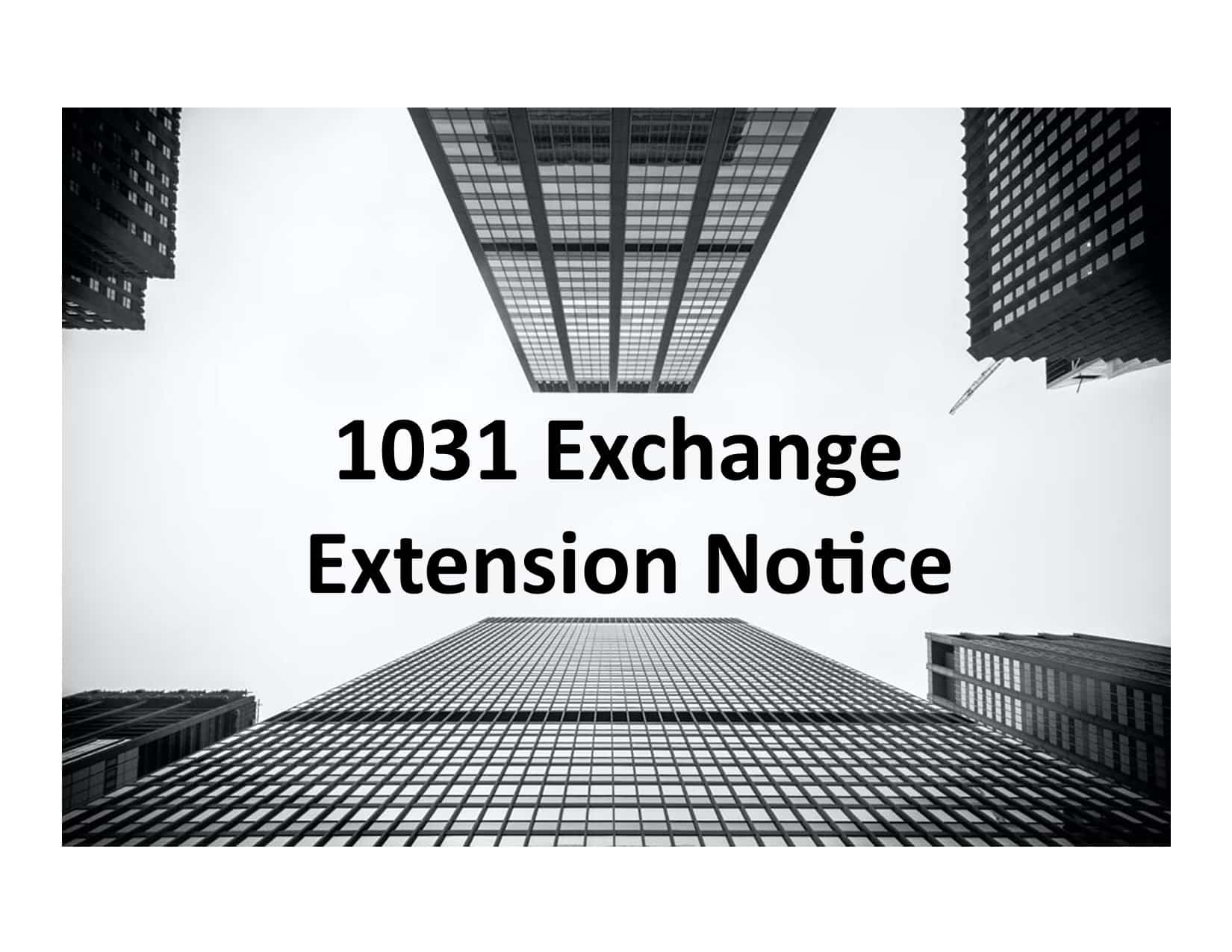By David J. Feeser, Esq. and James T. Walther, Esq., LL.M
The commercial real estate industry is in uncharted waters due to the impact of the COVID-19 pandemic. The economic impact of this pandemic will potentially be felt for some time. That being said, while the recent IRS guidance regarding the extension of the 1031 exchange deadlines is appreciated, and provides some benefits, the unclear guidance leaves much to be desired by those taxpayers that are in the midst,or about to enter into an exchange.
The unprecedented short-term impact on the commercial real estate industry from the pandemic is severe. Asset pricing and investment returns are uncertain as many commercial tenants, both big and small tenants, are struggling because of the pandemic. The real estate acquisition process, with or without a 1031 exchange, requires months of due diligence. The pandemic continues to delay closings as market outlooks and lending hurdles add further complexity to the transactions. Taxpayers involved in or contemplating a 1031 exchange need adequate time to conduct transactions and certainty regarding the process sooner rather than later. Inadequate and unclear extension guidelines will not help provide meaningful investment opportunities for current exchangers.
The history of disaster extensions for 1031 exchanges is well documented. However, the recent guidance, Notice 2020-23 published April 9, 2020 (“Notice”), deviates from the language in prior disaster relief which refers to existing IRS authority. Extension notices have historically contained a reference to Revenue Procedure 2018-58, Section 17, which provides 120-day extensions to the 45-day and 180-day deadlines. The April 9th Notice provided extensions to “Affected Taxpayers” (as defined therein) in exchanges that had either of their deadlines fall between April 1, 2020 and July 15, 2020. The Notice, while referencing Rev. Proc. 2018-58 in its entirety, but not Section 17 specifically, has given rise to the different interpretations of how the extensions are to be applied. The ambiguous language in the Notice can be interpreted as providing extensions until July 15, 2020 (the current majority opinion) or consistent with prior history, 120-day extensions to those deadlines that occur during the specified timeframe (the minority opinion).
In addition, the start date of April 1, 2020 for “affected taxpayers” creates a disparity, excluding certain taxpayers clearly impacted by the pandemic, albeit missing the qualifications by a couple of days. The IRS has acknowledged such shortcomings and that they will consider extensions in such situations.
Dealing with these conflicting understandings has fallen to Qualified Intermediaries (QIs) and the legal and tax professionals assisting taxpayers in navigating the process. QIs are experts in the field but are not allowed to provide tax or legal advice as doing so could disqualify themselves as intermediary. Yet, the intermediaries tend to be those most on top of guidance and implications to the exchange industry and help play a valuable role in disseminating information and in assisting tax and legal advisors with relevant information to best advise their clients. Given the confusion and uncertainty of the eligible extensions, Legal 1031 has developed a CV-19 disaster relief calculator to help clients and advisors consider their options.
Unfortunately, there are other taxpayer situations that may not be addressed under the Notice, keeping in mind that the Notice was intended to address many taxpayers’ considerations and not just 1031 exchanges. The relief is retroactive to April 1, 2020 but left out taxpayers who unsuccessfully concluded their exchanges prior to the issue of the Notice, or who previously identified property that requires further due diligence due a potential market correction and potential concerns about tenant stability. The 1031 exchange rules regarding re-opening the 45-day identification period, accessing funds in escrow, or terminating an exchange early are very inflexible. Once an exchanger identifies property and the 45th day has passed, the taxpayer is essentially locked in until completion. Non-compliance with these rules could not only affect tax deferral status for that exchange but could affect the QI’s status for other exchanges. The relief in the Notice has put QIs and some exchangers in positions where the only options are waiting for the exchange to conclude (day 181) or for additional guidance from the IRS.
It is understandable that these issues would arise under our current situation as the IRS was under tremendous pressure to provide relief guidance and stimulus payments under the CARES ACT. Notice 2020-23 was released on April 9th but it was retroactively applied to April 1st. It seems more reasonable that the IRS use a start date of March 13, 2020, the date of the first presidential disaster declaration, for determining extensions because this was when the massive uncertainty facing taxpayers began. In addition, they should use the minority interpretation of the extension notice as the official IRS position because it allows the most flexibility to complete exchanges in the current daunting commercial real estate environment.
Legal 1031 does not provide tax or legal advice, nor can we make any representations or warranties regarding the tax consequences of any transaction. Taxpayers must consult their tax and/or legal advisors for this information. Unless otherwise expressly indicated, any perceived federal tax advice contained in this article/communication, including attachments and enclosures, is not intended or written to be used, and may not be used, for the purpose of (i) avoiding tax-related penalties under the Internal Revenue Code or (ii) promoting, marketing or recommending to another party any tax-related matters addressed herein. Copyright © 2020 Legal1031. All rights reserved.
David Feeser, Esq., is an exchange director, and James Walther, Esq., LL.M., is general counsel, both of Legal 1031 Exchange Services, LLC, Melville, N.Y.
Article posted in the NYREJ and the NEREJ on April 22, 2020

